Alpinestars Paragon Plus – In our 2022 trail knee pads group test
While Alpinestars are mainly known as a manufacturer of clothing and protective gear for motocross, the Italian brand also offers a wide range of MTB-specific products. The Paragon Plus knee pad is made entirely of a thin material and forgoes Velcro straps, relying on an elasticated sleeve design with a sewn-in insert instead, with silicone strips on the thigh and back of the knee preventing it from slipping.
Click here for an overview: 14 trail knee pads in test
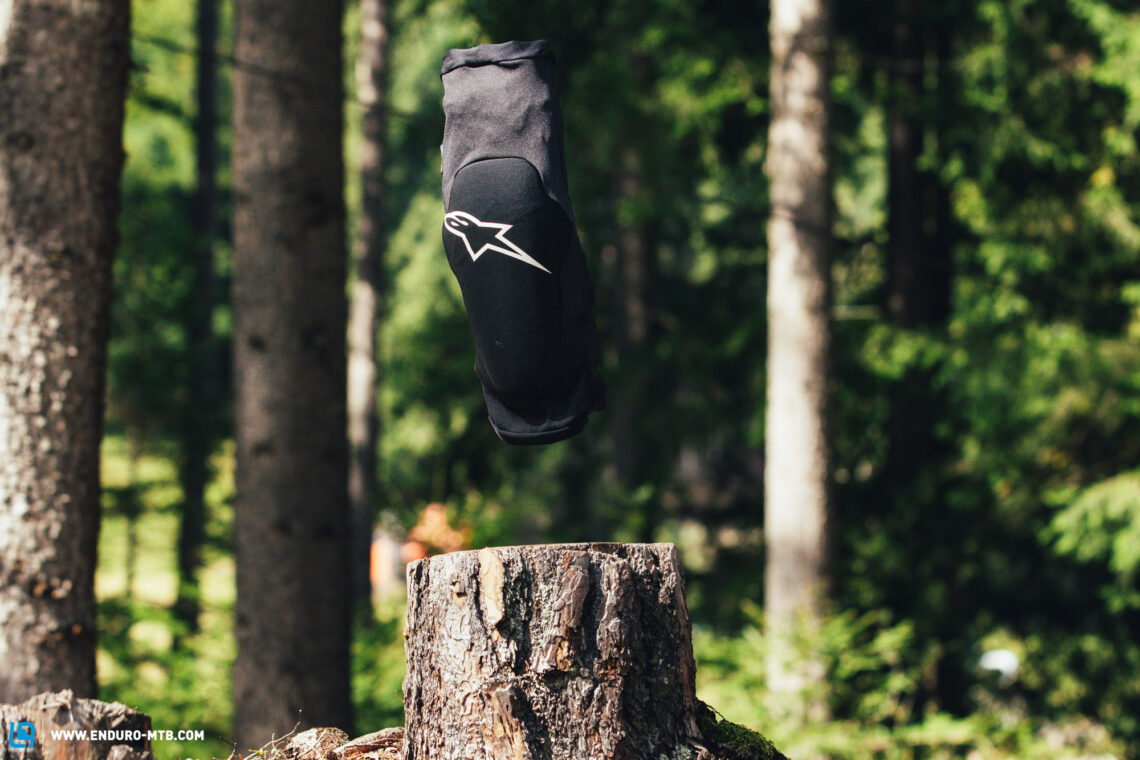
Fastening System Elastic Strap | Lab Test Results 14 kN at 3.3 ms | Manufacturer’s website
When putting on the pads, however, the rear silicone strip pulls on the hair on your legs, which can be quite annoying – and on our pads, the strip came loose after just a few test rides. However, in the lab test, the Paragon Plus delivered some impressive numbers, measuring 14 kN residual force at 3.3 ms, which makes it one of the best performing pads in this test – and that’s despite the fact that it’s the cheapest model, retailing at just € 59.99! At 173 g, it stands bang in the middle of the test field for weight.
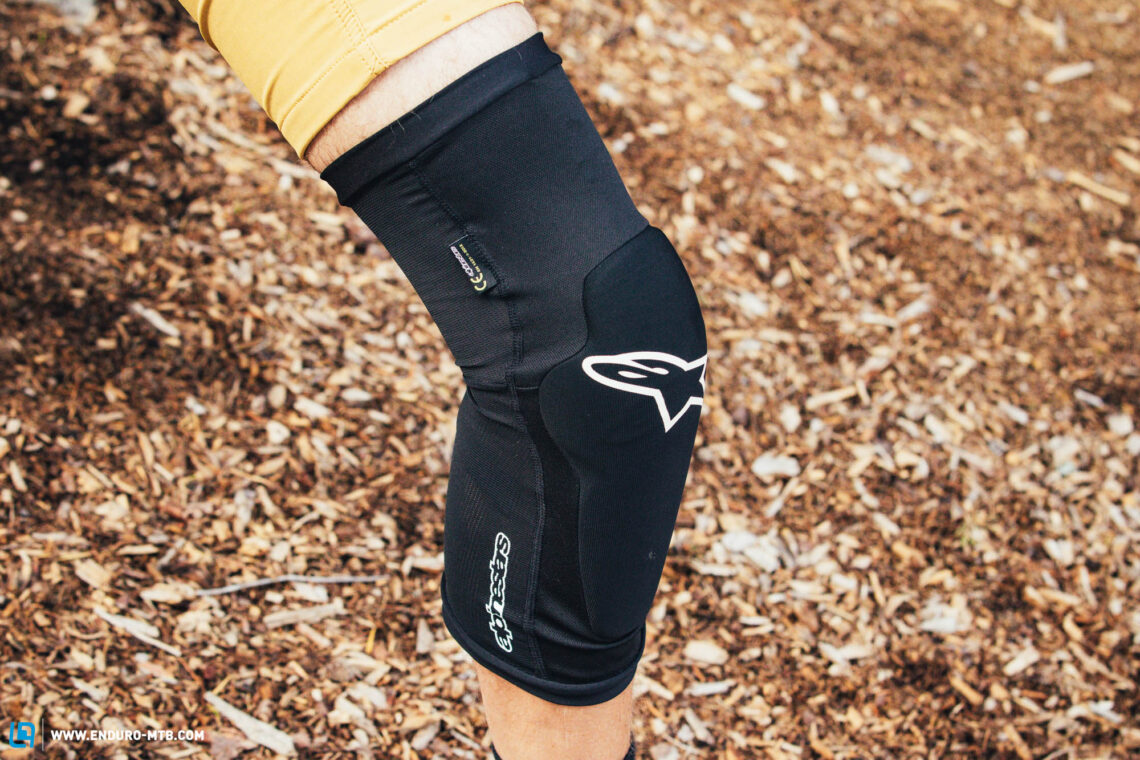
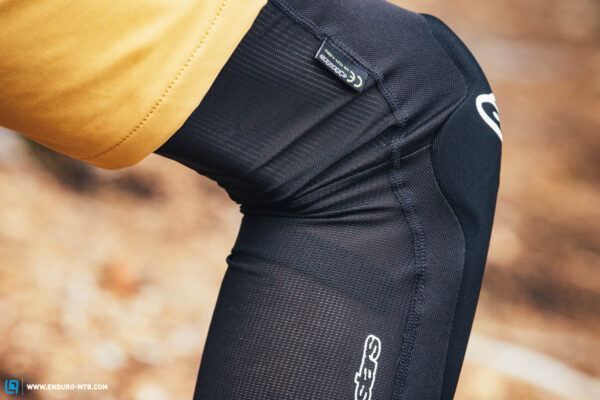
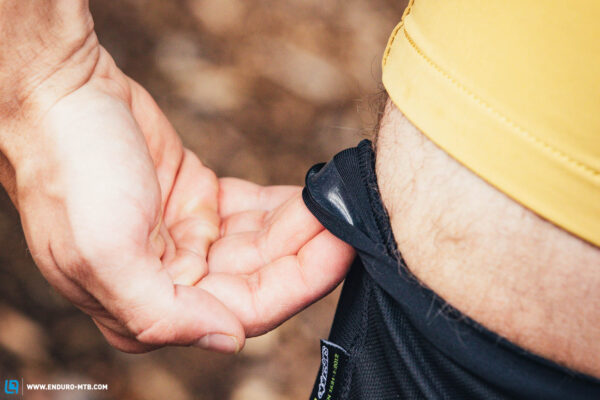
The Alpinestars Paragon Plus on the trail
The thin material of the Alpinestars Paragon Plus promotes ventilation, ensuring a pleasant inner climate under the sleeve. However, the protector doesn’t have any vent holes, causing heat to build up underneath it. The fit is excellent and the pad doesn’t slip – our test model even stayed in place with a torn latex strip. When pedalling, you can feel the material rolling up at the back of the knee and rubbing against the leg, which can be uncomfortable on long climbs. The protector is firm but at the same time elastic. As a result, it takes a long time to adapt to the shape of the knee while the rubbery consistency causes it to spring back into its original shape, preventing it from moulding itself to the leg and thus pressing on the kneecap when you pedal.
Tops
- Excellent impact absorption
- Cheapest knee pad in test
Flops
- Protector too stiff and rubbery
- Sub-par wearing comfort
You can find out more about at alpinestars.com.
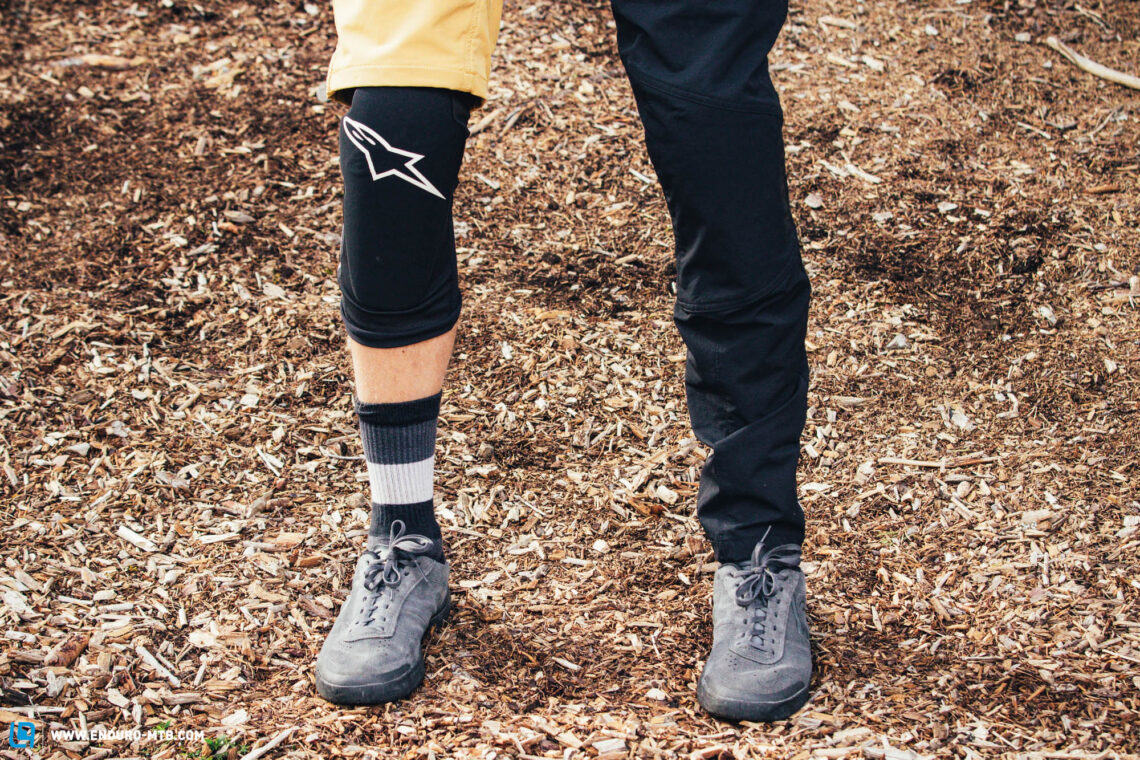
The test field
Click here for an overview: 14 trail knee pads in test
All kneepads in test: 100% Teratec Plus (Click for review) | Alpinestars Paragon Plus | AMPLIFI Havok (Click for review) | Chromag Rift Knee Guard (Click for review) | Fox Launch D3O (Click for review) | Ion K Lite (Click for review) | iXS FLOW EVO+ (Click for review) | Leatt AirFlex Pro (Click for review) | Ortema GP5 Knee Protector (Click for review) | Pearl Izumi Elevate Knee Guard V1 (Click for review) | POC Joint VPD 2.0 Knee (Click for review) | Rapha Trail Knee Pad (Click for review) | Scott Soldier 2 (Click for review) | Troy Lee Designs Stage (Click for review)
